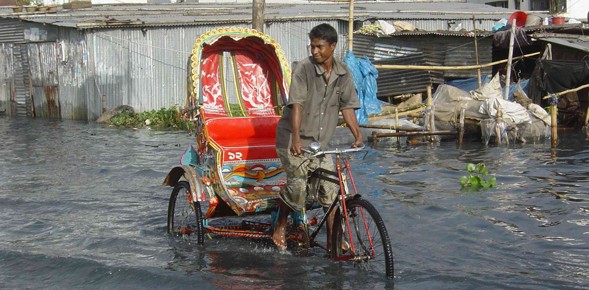According to the latest annual World Development Report of the World Bank, Asia is more prone than any other part of the world to natural catastrophes such as earthquake, volcano eruption, tsunami and flooding. A situation that certainly will need to be integrated into future tourism growth strategies of all countries in the region.
BANGKOK- A devastating earthquake in the Philippines, regular tremors in Indonesia and constant news of heavy flooding all across Asia and particularly in recent weeks in Thailand. Asia seems to be increasingly the victim of distorted weather conditions due to the global warming effect across the planet. As climate change is turning into reality every passing day, the latest annual World Development Report 2014 recently released by the World Bank looks at the methods for countries in the region to strengthen risk-management systems as their population will face increasingly crisis.
Regular catastrophes, from drought to flooding, from earthquakes to volcano eruption bear a risk of destabilizing local societies with job losses, natural diseases, growing crimes and job losses. Natural catastrophes do not only destroy the environment, they can also largely contribute to the collapse of social relations within a society. They can also weight demographically as they generate heavy human losses.
The frequency of natural catastrophes has grown out of proportion between 1981 and 2010 according to the World Development Report. While the OECD average has grown from an average of less than 2 catastrophes per year in 1981 to close to 2.5 times per year in 2010, South Asia has seen this figure jumping from an annual average of 2.5 times in 1981 to almost 5 times in 2010; East Asia rate has also grown from less than 2 times per year back to 1981 to slightly over 4 times per year today. The report recommends to all countries to work from earl beginning at preventing risks but also at managing them. By educating people and explaining properly catastrophes, by protecting local populations, by adapting local communities to a challenging environment and finally by insuring that financial capacities will remain even during more difficult times will help to mitigate the negative impacts of natural violences.
However, local NTOs or tourism trade associations should work out together on an efficient communication during a crisis as well as looking also at alternatives to avoid thousands of visitors turning into victims of a natural catastrophe. The less prepared and less transparent the natural issues at a destination, the less comprehension from travellers when learning about the lack of readiness of its holiday destination.
Luc Citrinot a French national is a freelance journalist and consultant in tourism and air transport with over 20 years experience. Based in Paris and Bangkok, he works for various travel and air transport trade publications in Europe and Asia.




![[PR] PR_Ascott and Vimut Hospital_2024](https://www.traveldailynews.asia/wp-content/uploads/2024/04/PR-PR_Ascott-and-Vimut-Hospital_2024-400x265.jpg)





























































